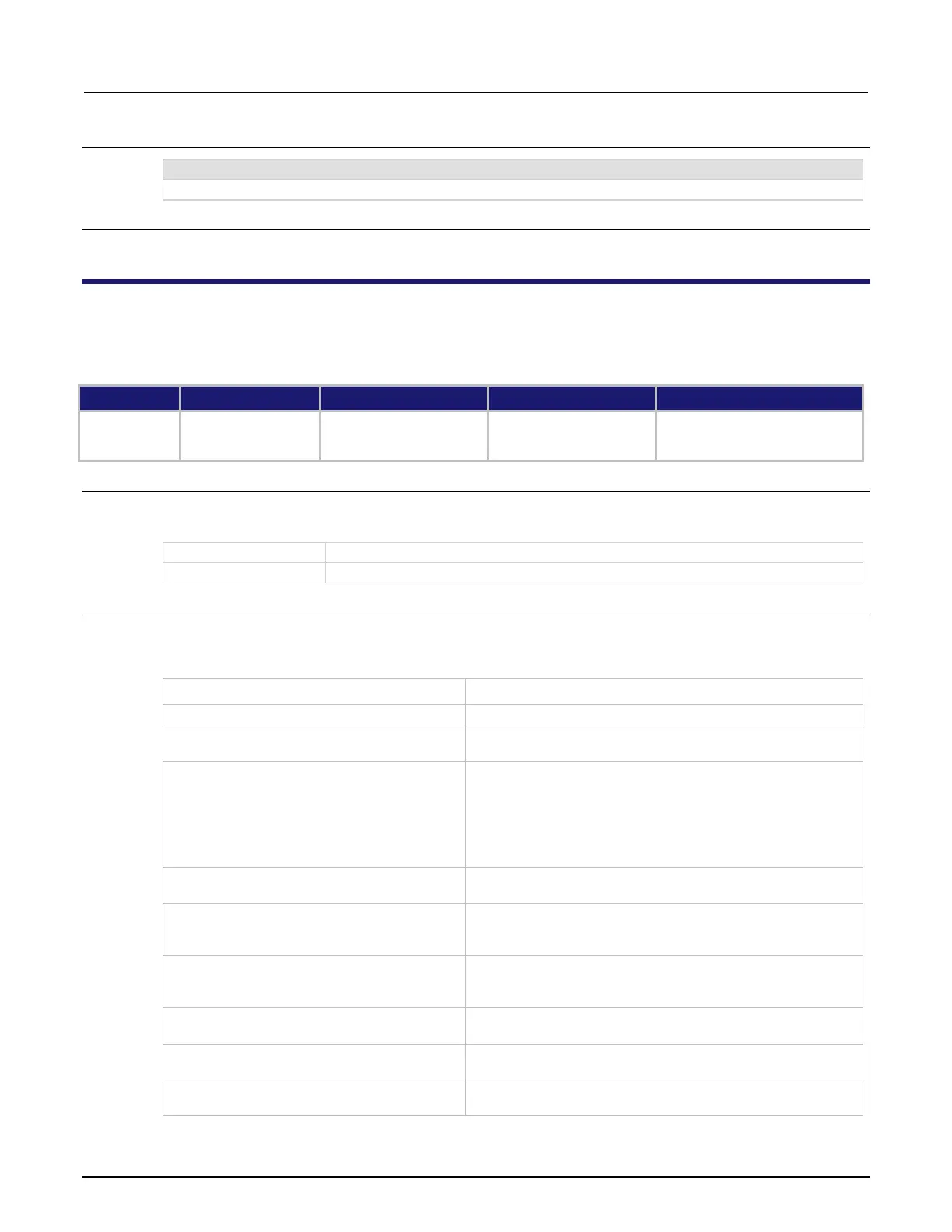Series 2600B System SourceMeter® instrument Reference Manual Section 9: TSP command reference
2600BS-901-01 Rev. F/August 2021 9-57
digio.trigger[5].stimulus = digio.trigger[3].EVENT_ID
Uses a trigger event on digital I/O trigger line 3 to be the stimulus for digital I/O trigger line 5.
Also see
None
digio.trigger[N].mode
This attribute sets the mode in which the trigger event detector and the output trigger generator operate on the
given trigger line. This command is not available on the 2604B, 2614B, or 2634B.
Instrument reset
Digital I/O trigger N reset
Recall setup
Usage
triggerMode = digio.trigger[N].mode
digio.trigger[N].mode = triggerMode
The trigger mode; see Details for values
Digital I/O trigger line (1 to 14)
Details
Set triggerMode to one of the following values:
Allows direct control of the line.
Detects falling-edge triggers as input; asserts a TTL-low pulse
for output.
If the programmed state of the line is high, the
digio.TRIG_RISING mode behavior is similar to
digio.TRIG_RISINGA. If the programmed state of the line is
low, the digio.TRIG_RISING mode behavior is similar to
digio.TRIG_RISINGM. Only use this setting if necessary for
compatibility with other Keithley Instruments products.
Detects rising- or falling-edge triggers as input. Asserts a
TTL-low pulse for output.
digio.TRIG_SYNCHRONOUSA or 4
Detects the falling-edge input triggers and automatically
latches and drives the trigger line low. Asserting the output
trigger releases the latched line.
digio.TRIG_SYNCHRONOUS or 5
Detects the falling-edge input triggers and automatically
latches and drives the trigger line low. Asserts a TTL-low
pulse as an output trigger.
digio.TRIG_SYNCHRONOUSM or 6
Detects rising-edge triggers as input. Asserts a TTL-low pulse
for output.
Detects rising-edge triggers as input. Asserts a TTL-low pulse
for output.
Asserts a TTL-high pulse for output. Input edge detection is
not possible in this mode.

